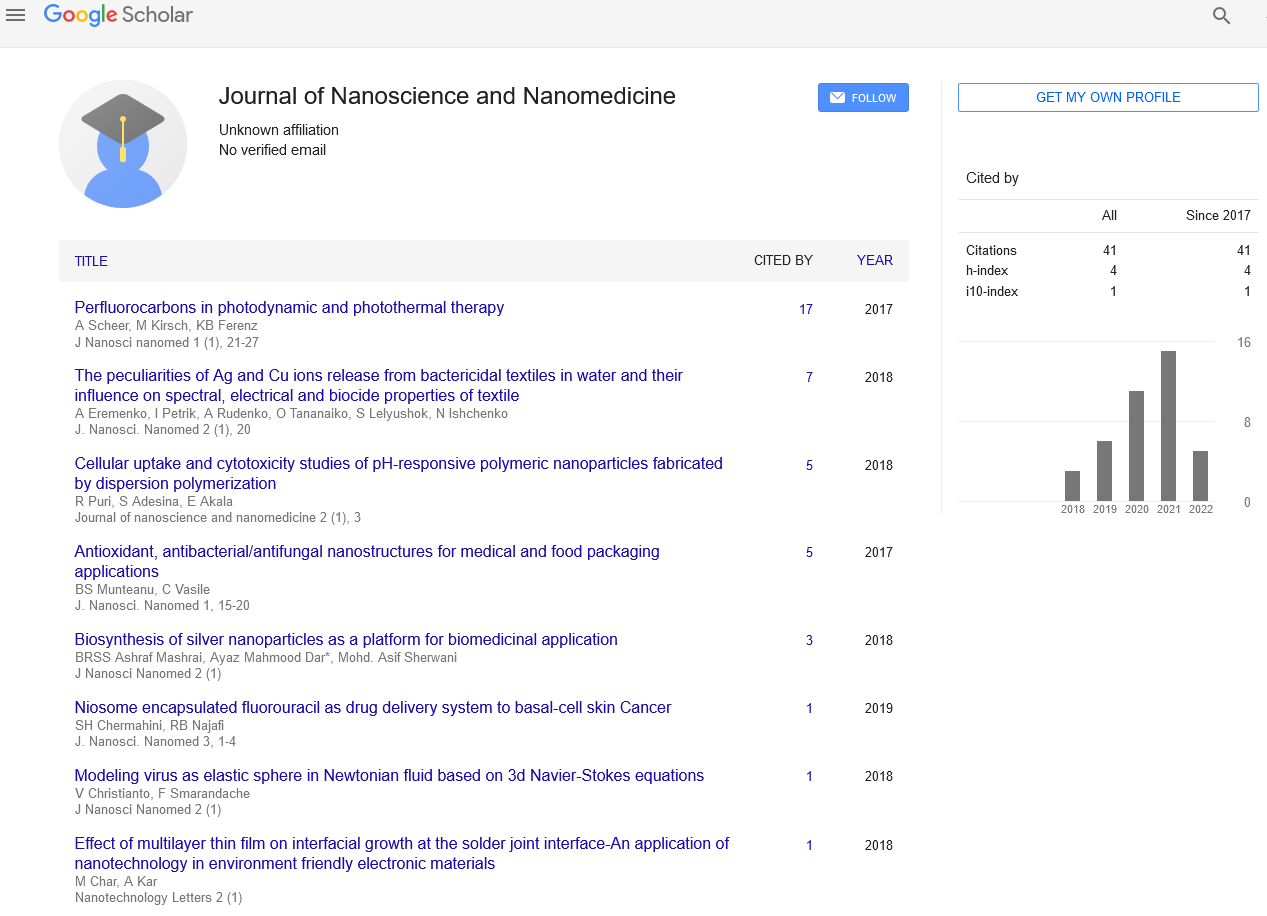Nanomedicines that target dendritic cells to induce immunological tolerance
Received: 02-Mar-2022, Manuscript No. PULJNN-4541; Editor assigned: 05-Feb-2022, Pre QC No. PULJNN-4541 (PQ); Accepted Date: Mar 04, 2022; Reviewed: 18-Mar-2022 QC No. PULJNN-4541 (Q); Revised: 20-Mar-2022, Manuscript No. PULJNN-4541 (R); Published: 25-Mar-2022, DOI: 10.37532/ puljnn.22.6(2).08-09
This open-access article is distributed under the terms of the Creative Commons Attribution Non-Commercial License (CC BY-NC) (http://creativecommons.org/licenses/by-nc/4.0/), which permits reuse, distribution and reproduction of the article, provided that the original work is properly cited and the reuse is restricted to noncommercial purposes. For commercial reuse, contact reprints@pulsus.com
Abstract
Induced tolerogenic dendritic cells are a promising treatment for an autoimmune illness that has shown potential in disease models in the lab and early clinical studies. Tolerogenic immunotherapy, in contrast to traditional immunosuppressive therapies, uses the immune system's cells and functions to inhibit the autoreactive lymphocytes that cause illness and damage. The fundamental procedures for isolating and reprogramming Dendritic Cells (DCs), which are at the heart of this strategy, are well understood. The expensive cost and customized nature of this technology, however, limit its wider adoption. By executing this reprogramming process in situ, nanomedicine provides an alternate way. The problems and potential of employing nanoparticles as a delivery method to target DCs and induce immunomodulation are discussed in this paper, with an emphasis on their adaptability. The potential for them to overcome crucial challenges in organ transplantation and increasingly common autoimmune conditions like type 1 diabetes and multiple sclerosis, where novel immunotherapy techniques have begun to show promise, is then highlighted.
INTRODUCTION
Dendritic cells (DCs) are a kind of antigen-presenting cell that initiates and regulates adaptive immune system functions1. Although DCs are widely recognised for their capacity to activate cytotoxic and helper T cells to manage infections and malignancies, they also work to restrict inappropriate autoreactive responses like those seen in autoimmune disorders.DCs are a particularly intriguing target for nanomedicines because they are highly phagocytic immune surveillance cells, and there is growing interest in treatments that induce tolerogenic behaviours in these cells. Importantly, tolerogenic DCs may be able to suppress aberrant cytotoxic and inflammatory responses in an antigenspecific manner allowing for a more precise approach to the treatment of many refractory autoimmune disorders.
TolDC-eliciting drugs must accomplish two key goals: (1) transport a disease-specific ‘self-antigen' to the proper population of DCs for processing and presentation, and (2) regulate or override the expression profile of these DCs to give the right signals to T cells to produce tolerogenic results.
A nanomedicine technique can meet these difficult requirements. Nanoparticles are a delivery vehicle that can contain numerous stable therapeutic cargos while also having the potential to create tolDCs. We look at how the physicochemical properties of nanoparticles may be optimised to make them more efficient in creating DCtargeting nanomedicines for immunological tolerance, with a focus on organ transplantation and autoimmune illnesses including Type 1 Diabetic Mellitus (T1D) and Multiple Sclerosis (MS).
When T cells mistakenly recognise and react to harmless self-antigens in the same way that infected or malignant cells, they are a primary facilitator of damage in autoimmune disease. Multiple tolerance mechanisms, including those present centrally in the thymus and mediated peripherally by DCs, preclude this in health. 'Central' tolerance is imposed in the thymus during T cell development, when autoreactive T cells are eliminated via thymic DCs. This coverage, however, is inadequate, necessitating a second layer of control from DCs (and other APCs) in the periphery. TolDCs for therapeutic application can be made utilising DC vaccination-inspired approaches. To establish a tolerogenic phenotype, ex vivo pure DCs are often cultivated with tolerance-inducing pharmacological drugs such as rapamycin or dexamethasone, as well as cytokines such as Transforming Growth Factor (TGF)- and Interleukin (IL)-1012. TolDCs that have been 'induced' can then be reintroduced into the body. These cells have intermediate phenotypes that have characteristics of both immature and activated mature DCs, such as changes in migratory activity, anti-inflammatory cytokine release, and the kind of tolerogenic response elicited in T cells, depending on the induction strategy. Although induced tolDCs can offer non-specific immunosuppression, loading disease-specific autoantigens into these DCs is required to generate tolDCs that target specific autoimmune conditions.
Macrophages and organs in the reticuloendothelial system mostly collect nanoparticles delivered into the circulatory or lymphatic systems. In a similar fashion to infections, nanoparticles can be collected by precursor DCs in the blood and immature DCs in peripheral tissues. These findings sparked interest in using nanoparticles to control DC functions in immunotherapy, such as in cancer, viral vaccines, and allergy treatment, and may one day be useful in the treatment of immune phenomena like cytokine storms, a possible sequela of viral infections like influenza and SARSCoV225.
The use of nanoparticles to modulate DCs has several benefits over traditional DC-targeting techniques, including (1) antigen cargo preservation from protease degradation and (2) co-delivery of several therapeutic moieties to improve the immune response, (3) the capacity to manage cargo release, and (4) the minimization of off-target effects Following the first success of DC-targeting nanomedicines for cancer immunotherapy, potential techniques to modify the immune system for the treatment of autoimmunity are being modified and developed.
Allograft transplantation is frequently the sole option for patients with end-stage organ illness, with the host's rejection of donated organs being a significant therapeutic challenge. When the recipient's immune system recognises the donor antigens in the transplant, rejection occurs.
Immunosuppressants can help prevent chronic graft rejection, but long-term use puts the patient at risk for opportunistic infections and cancer81. Because of their ability to internalise and cross-present alloantigens, DCs are thought to be a suitable target for modulating immunity following transplantation. Several nanoparticle-based formulations have showed promise in preventing transplant rejection. Rapamycin administration by intradermally injected PEGylated micelles, for example, has been demonstrated to considerably extend the lifespan of skin allografts. This research implies that nanoparticles may be able to minimise some of the long-term consequences of nonspecific immunosuppressant administration.
Key Words
Nanomedicine; Immunomodulation; Immunotherapy.





